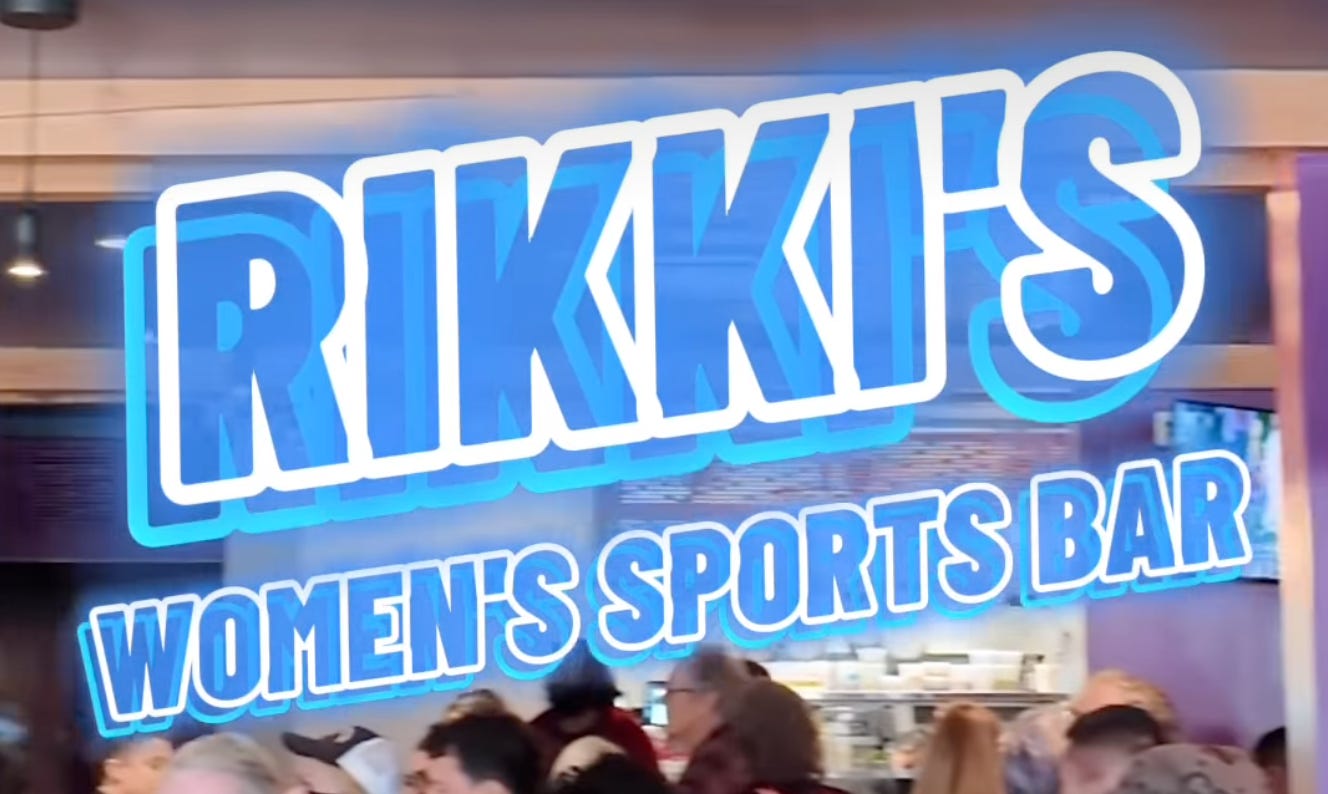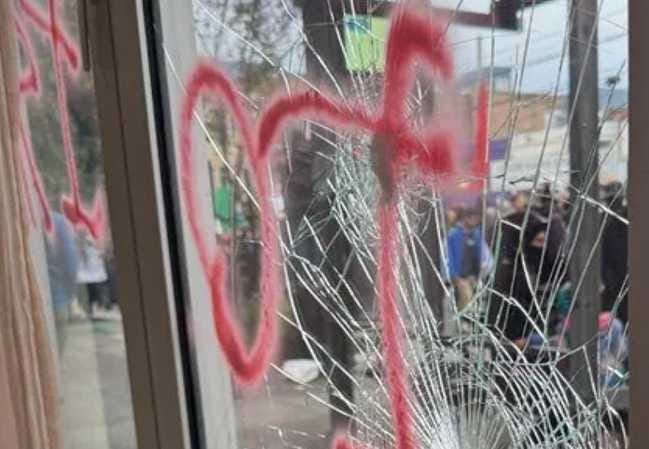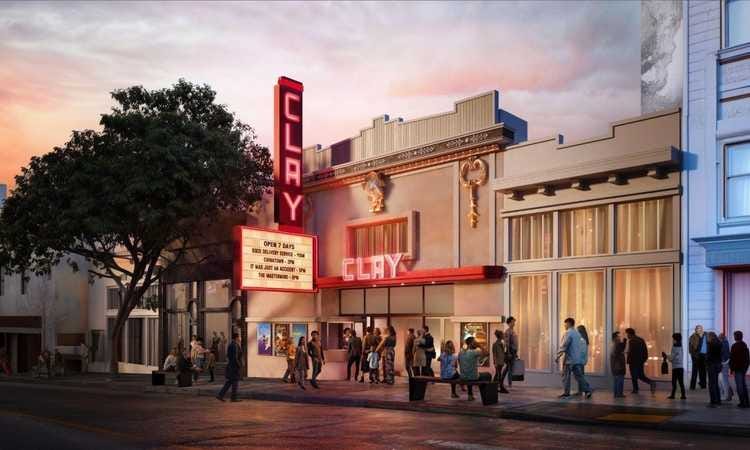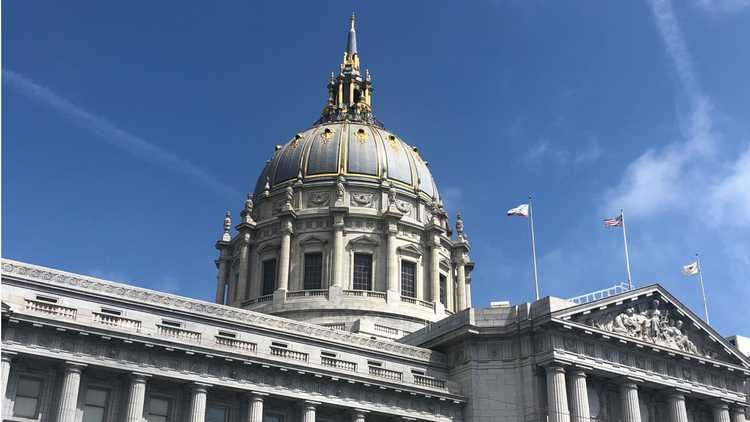Attack on Manny’s Investigated as Hate Crime
PLUS: RV encampments face new enforcement
What You Need To Know
Here’s what happened around the city for the week of June 8, 2025:
- Attack on Manny’s Investigated as Hate Crime
- RV encampments face new enforcement
- Snapshot of the SF Economy As of May 2025
- The Clay Theater on Fillmore Street will reopen next year
Recent & upcoming openings:
- At Rikki’s, Root for Women’s Sports
Research & Analysis:
- Serving San Francisco: Why you should join a commission
Attack on Manny’s Investigated as Hate Crime
Published June 13, 2025
On June 9 vandals broke into Manny’s, a beloved café and community space, smashing its windows and spray-painting hate speech including “Die Zio[nist]” and "The only good settler is a dead 1." It's a shocking escalation of antisemitic violence in San Francisco’s Mission District.
The Facts
On Monday night, vandals broke into a Mission District civic café, smashed windows, and spray-painted hate speech such as “Death 2 Israel is a Promise” and “Die Zio[nist].” Police are treating the incident as a hate crime. A GoFundMe campaign has raised over $200,000 to help with repairs and security upgrades.
Some community members quickly sprang to action to help with the cleanup, and a Noe Valley Jewish community organized a support gathering. Mayor Lurie; Supervisors Melgar, Mahmood, and Dorsey, and Senator Scott Wiener all condemned the attack and offered support to Manny Yekutiel, the café’s owner. Supervisor Jackie Fielder, who represents the Mission District where Manny's is located, has not publicly condemned the attack, but told the Chronicle she was "connecting all small businesses vandalized with city resources".
In an op-ed in the Chronicle, Manny Yekutiel wrote that he is "heartbroken" but highlighted the support he quickly received:
But even in the middle of this ugliness, there were many points of light. Since the news broke that Manny’s was vandalized, I received hundreds of messages of love and support from all corners of the city. Mayor Daniel Lurie, without even asking, showed up to my space to hold my hand, to console and to cry with me. Before I could even start cleaning up the damage, strangers from the neighborhood stopped what they were doing to help. A kind man named Jesus grabbed my paint bucket and started covering the first layer of graffiti without a word. The outpouring has been overwhelming.
- Manny Yekutiel: When hate masquerades as protest, we all lose
The Context
The attack on Manny's comes amid a national surge in antisemitic incidents. In 2024, California logged roughly 1,344 such cases, the second-most of any state, according to the Anti-Defamation League. Though on a per-capita basis, California ranks #14 in antisemitic incidents.
Manny's is a frequent target of antisemitic, anti-Zionist, and anti-Israeli graffiti.
The GrowSF Take
This attack shocks the conscience of our city. We must stand together against hate. If you'd like to help, please consider donating to the GoFundMe and visit Manny's for lunch or a coffee to show your support.
RV encampments face new enforcement
Published June 12, 2025
A new proposal from Mayor Lurie would prohibit oversized vehicles like RVs from parking on city streets for more than two hours, while coupling enforcement with outreach, buyouts, and housing vouchers.
The Facts
Oversized vehicles like RVs will no longer be allowed to park on city streets for more than two hours, with exemptions limited to industrial zones. Before any enforcement, outreach workers will approach residents living in their vehicles and offer options— whether that's housing, shelter beds, or cash buyouts for surrendering their vehicles. Those who accept will qualify for a temporary permit, valid for up to six months, to give them time to transition.
The city is dedicating $12.9 million over two years: $8.2 million to create 65 new rapid-rehousing vouchers, $1.7 million for outreach services, and $3 million for enforcement and necessary signage. Up to 115 vehicles could be purchased under the buyout effort. The decision follows a street-by-street audit that counted over 500 oversized vehicles, including 437 inhabited ones.
The Context
RV living has surged 37 percent since 2022, even while tent encampments have dropped dramatically. But the lack of sanitation, proper restrooms, trash pickup, and clean water presents serious public health and safety hazards. Nearby residents report unsafe conditions, from exposed sewage to abandoned vehicles .
Previous RV-sheltering programs failed: the Bayview triage site drained over $15 million, housed fewer than 35 vehicles at a time, and closed this spring without making a lasting impact. RVs have been pushed around without a long-term plan, resulting in pop-up RV communities at various places around the city.
The GrowSF Take
Streets are not intended for long-term living. RVs should be parked in facilities with proper power delivery, trash services, and sewage treatment. We don't want these families and individuals to be displaced, but we can't accept unsanitary and unsafe street conditions. This new proposal, which pairs connection of services with enforcement, is the sensible approach.
Snapshot of the SF Economy As of May 2025
Published June 11, 2025
A new report from the SF Controller shows that downtown is slowly but steadily recovering as employment holds flat, transit ridership hits new highs, and rents climb—though tech layoffs and housing supply constraints temper optimism.
The Facts
The unemployment rate fell to 3.7% in April 2025, marking continued labor-market resilience, according to the May 2025 report on the Status of the San Francisco Economy. The public sector led local job gains while tech employment contracted over the same period due to some high-profile layoffs. Muni and BART ridership reached post-pandemic highs of about 65% and 38% of 2019 levels, which is encouraging though still far below where we should be. Downtown foot traffic, however, climbed above 75% of 2019 levels. Meanwhile, apartment asking rents surpassed $3,000 per month even as home sale prices remained flat and new housing construction stayed muted, with about 50 housing units permitted in April 2025.
The Context
While downtown foot traffic and transit ridership are both showing encouraging trends toward recovery, ongoing tech-sector layoffs and indications of a national slowdown and possible recession due to macroeconomic policies leave us all in a wait-and-see kind of mood.
These mixed signals arrive as San Francisco adapts to longer-term remote-work trends and faces a slowdown in its core technology economy. Office attendance is still just 40% of its pre-pandemic level, which has knock-on effects on local businesses and the city’s tax base. For a region that depends on sectors from tourism to biotech, this uneven recovery highlights the need for strategies that support both urban vibrancy and economic stability.
Compared to peer cities, New York City’s unemployment rate was 5% in April 2025, and its subway ridership recovered to 75.9% of April 2019 levels with bus ridership at 67.5%. Los Angeles’s unemployment is at 5.8%, and its transit systems is at about 83% of pre-pandemic levels.
The GrowSF Take
GrowSF urges policymakers in City Hall to build on these modest gains by streamlining approvals for infill housing near transit hubs, offering short-term tax relief to small businesses reoccupying vacant ground-floor spaces, and incentivizing shared-workspace conversions in underutilized office buildings. Sustained investment in transit and downtown infrastructure can reinforce ridership gains and economic activity.
The Clay Theater on Fillmore Street will reopen next year
Published June 10, 2025
After sitting vacant for five years, the historic Clay Theater on Fillmore Street is finally getting the investment it needs to come back to life. The marquee will light up again, films will return to the big screen, and one more neighborhood institution will be saved from permanent decay.
The Facts
The Clay Theater will undergo a full renovation: seismic upgrades, modern projection and sound systems, and a restored 200-seat auditorium that will host more than 500 screenings a year. The original neon sign and facade will be preserved, and the name, “The Clay”, is staying.
Millions of dollars are being invested to undertake a thoughtful, community-minded renovation. The project is led by the nonprofit Upper Fillmore Revitalization Project, which is committed to restoring the theater as a public cultural space. A board of local advisers is said to be in the works to help guide the effort. Design and architecture teams with deep experience in historic preservation—like Page & Turnbull and Arup—are helping bring the vision to life.
The Context
The Clay Theater first opened in 1910, making it one of the oldest movie houses in San Francisco. For decades, it was a beloved arthouse cinema, known for foreign films, independent features, and midnight screenings of The Rocky Horror Picture Show.
After decades of operation under Landmark Theatres, the Clay shut down in early 2020—just before the pandemic—when Landmark chose not to renew its lease. Since then, the building has sat dark, a vacant shell where a beloved neighborhood institution once thrived.
The Clay is just one of many shuttered theaters across San Francisco. Institutions like the Alexandria in the Richmond and the Red Vic in the Haight have sat dark for years. This project shows what’s possible when we choose to build for the future.
The GrowSF Take
The Clay’s comeback is a blueprint for revitalizing every San Francisco neighborhood. A long-vacant, historic theater will be restored, reopened, and returned to public use. It’ll bring new energy, foot traffic, and cultural activity to Fillmore Street.
We’re also excited to see a similar effort at the Castro Theatre, where Another Planet Entertainment is working to bring live programming and movies back to the city’s most iconic cinema.
None of this was inevitable. These spaces would have stayed empty without major philanthropic investment and a commitment to thoughtful, community-oriented restoration. We’re lucky to have civic-minded people stepping up to make it happen—and we need more of it, in more neighborhoods, all over the city.
Recent & upcoming openings
A great city is constantly changing and growing, let’s celebrate what’s new!
At Rikki’s, Root for Women’s Sports

WHERE: 2223 Market
WHEN: Tues-Thurs 3:30-10pm, Fri & Sat 11:30am-Midnight, Sun 11:30-10
A San Francisco first is opening in the Castro at Market & Sanchez — a women’s-sports-only sport bar. All are welcome here… as long as you’re a fan of the City’s new WNBA team, the Valkyries!
Rikki’s will show women’s soccer and WNBA games from across the county, and the interior is a “vibrant tribute to the history of women’s sports,” according to the Chronicle. It’s named for Rikki Streicher, a legend behind many queer and lesbian bars in the 60s to 90s, and was one of the founders of the Federation of Gay Games. With the Golden State Valkyries putting up pretty good numbers, especially for a brand new team, the watch parties are sure to be a ball.
Research & Analysis
Serving San Francisco: Why you should join a commission
Published June 9, 2025
Citizenship is not a spectator sport.
- Robert Putnam, Bowling Alone
This is the second post in our series called Serving San Francisco, highlighting the ways you can help our city thrive.
In the first post, we talked about what a commission is. Now, we’ll demystify how you join one, and why you should.
What qualifications do I need to have to join a commission?
First, all commissions require members to be voting-age residents of San Francisco1.
Second, many commissions have “seat-specific” qualifications. For example, Seat #8 on the Behavioral Health Commission must be a family member of a consumer (a consumer is defined as a person who has received mental health and/or substance use services in San Francisco from any program operated or funded by the City, From a State hospital, or from any public or private nonprofit mental health agency).
Though these qualifications can often be hyper-specific, the value of the specific expertise or experience to the work of the commission is usually clear. For others - well, not so much? Why do two seats on the Ballot Simplification Committee need to be nominated by the National Academy of Television Arts and Sciences, Northern California Chapter or the Northern California Broadcasters Association? Last I checked these bodies were not the preeminent authorities on who communicates clearly and objectively.
Some qualifications are “floating” or general to the body itself. For example, if you want to join the SFTMA Citizens Advisory Commission, you must be a regular rider of MUNI.
Finally, our Charter states that every commission must reflect the diversity of the city of San Francisco. The City Attorney has written that “This requirement is general and aspirational in nature”2 -, in practice, each Appointing Authority interprets and emphasizes this rule differently.
What is the time commitment for a commission?
Most commission “terms” are 2 or 4 years. Commissions generally meet on a monthly basis for ~2 hours, though some meet as much as once per week and as infrequently as once per quarter.
What are common "surprises" to people who join commissions?
There are typically few surprises for people who join a commission (at least, if they talk to us!) because they have done the work to attend the meetings of the commission they’re joining. But even then, there are some surprises:
Some seats are eligible for health benefits, and compensation! This is to ensure there’s socioeconomic diversity on commissions.
Some commissions, in both culture and tradition, play an active role in the community, serving as a kind of liaison to the community, and regularly responding to community complaints funneled to that commission. Police commissioners are, in practice, present on site of any homicide, to take questions, complaints, and to reassure the community.
How do I pick a commission to serve on?
First and foremost, pick a commission whose topic area overlaps with your interest and experience; this will ensure that your time and talent are well used. Second, and more practically, find a commission whose time commitment matches what you can give, consistently, over a 2-4 year period. Use our San Francisco Commission Tracker to find one that's right for you.
What makes a great commissioner?
You’ll be a great commissioner if you:
Care deeply about transparency, accountability, and public participation in government - If you understand and believe in the value of commissions, you’ll be a better steward of it.
Show up, and are deeply present - We’ve heard horror stories of commissioners falling asleep at commission meetings, of commissions not able to meet due to lack of quorum. It’s embarrassing to have to say that is completely unacceptable. Every potential commissioner who reads this blog post and decides to apply as a result should take a personal oath to show up, to be present and thoughtful, to ask thoughtful questions, to engage in discussion in good faith, and to know that, if you don’t, you should cede your seat to someone who will.
Can separate the vocal minority from the true majority, and advise accordingly - we feel this is becoming increasingly important for us to remind commissioners, and any other Appointed and Elected folks we talk to, that there will be people who regularly show up to the commissions to provide public comment, and voice extremist views. Should you take what they say as representative of the will of all San Franciscans? No. As a commissioner, you need to be able to parse the vocal minority from the true majority, and advise the city Department you’re working with accordingly.
How are commissions and commissioners held accountable to doing their jobs?
To wit - they’re not. Many commission meetings are live on SFGov, and commissions must, by law, post their Agendas and meeting minutes online. But there is no formal mechanism by which commissions, for example, report attendance of their commissioners, evaluate their work against the function of the body, there is no commissioner review process, no way in which the Dept and commissioners can evaluate their own relationship, no way they are held accountable by the public for the policies and budgets they advise on and the personnel decisions they make. How is it that bodies which can have so much power are accountable to… basically no one? We imagine the Commission on Streamlining will talk about this topic soon.
Who decides who joins a commission?
Every “seat” on a commission has a specific “appointing authority” - a person, persons, or office, who is responsible for filling that seat. The Mayor’s Office and the Board of Supervisors appoint the most seats. Each has their own application process, which we’ll get into later.
What does the application and appointment process look like?
It depends on who’s appointing. And even then, it depends on other factors unique to that commission. But, in general, there are two main appointing authorities with two processes:
Mayoral appointments - Fill out an application. Speak with the Mayor’s Office (one or several conversations). Take the oath.
BOS appointments - Fill out this pdf, email it to BOS-Appointments@sfgov.org. Go in front of the Rules Committee, who votes on your candidacy. Your appointment is voted on by the Board of Supervisors. You are sworn in.
But before you do that, get in touch! We can give you tips and help you build a strong application.
Some commissions, often those that are decision making or oversee the use of funds, require you to file something called Form 700. This form is confusing to fill out, and it makes all of your finances public - before you are appointed to that commission seat! By virtue of this, it can deter great people from desiring to join a commission. Please don’t let it! This form is in place for good reason. And there are people who can help you figure out how to fill it out.
But no, really - how do you get appointed?
Commissions have a reputation for being the place where an elected official, be it the Mayor or a Supervisor, could repay a favor or reward fealty. And that reputation was definitely earned. But we think this new Administration, and new Board, will emphasize merit over fealty and, hopefully, usher in an era of actually good governance.
What does the commission onboarding process look like?
It’s our understanding, reported to us by many commissioners, that this is basically nonexistent. The City Attorney’s office distributes the Good Government guide, but there is nothing, at least consistently, in the way of a formal onboarding on how to be a commissioner in general, let alone on the topics you’re expected to advise on as a commissioner - including deciding the policy for an entire City Department! Which is wild, if you think about the power that some of these commissions have. We hope this is something the commission on Streamlining looks at as part of their overhaul on commissions.
Ok. I’m ready to join a commission!
Amazing! If you have any questions, feel free to reach out to us at talent@growsf.org and we’d be happy to help answer any questions we can and support you through the process.






